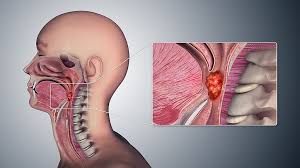
What to expect during head and neck cancer?
A biopsy is a crucial diagnostic procedure used to determine whether cancer or other abnormal cells are present in a specific area. For head and neck cancer, a biopsy helps in confirming the diagnosis and determining the best course of treatment. Understanding the process can alleviate some anxiety and help you prepare for what’s ahead. What to anticipate from a head and neck cancer biopsy is covered in detail in this guide.
1. Pre-Biopsy Preparation
Consultation and Evaluation
Before the biopsy, you’ll meet with your healthcare provider, who will assess your symptoms, medical history, and the need for the biopsy. Dr. Amit Cancer Care, a leading surgical oncologist in Mumbai, often conducts a thorough examination of the head and neck area to locate any abnormalities.
Type of Biopsy
Your healthcare provider will explain the type of biopsy you’ll undergo. Common types for head and neck cancer include:
- Fine Needle Aspiration (FNA) Biopsy: A little sample of tissue or fluid is removed using a fine needle.
- Core Needle Biopsy: A larger needle is used to remove a core of tissue.
- Incisional Biopsy: This method involves surgically removing a part of the tumour or aberrant tissue.
- Excisional Biopsy: The entire tumour or abnormal area is removed surgically.
Pre-Procedure Instructions
You may receive specific instructions on how to prepare for the biopsy, which could include fasting, avoiding certain medications, or other preparations based on the biopsy type and location.
2. The Biopsy Procedure
Anaesthesia
The biopsy is typically performed under local anaesthesia, which numbs the biopsy area. In some cases, sedation or general anaesthesia may be used, especially for more invasive biopsies or if you are particularly anxious about the procedure.
Positioning
Depending on the biopsy location, you will be positioned accordingly. For example, if the biopsy is in the mouth or throat, you may lie on your back with your mouth open. If it’s in the nasal cavity or sinuses, you might be positioned to allow access to the area.
Biopsy Technique
The technique used will vary based on the biopsy type:
- FNA Biopsy: Syringes are used to extract cells or fluid from the abnormal region after a thin needle is inserted
- Core Needle Biopsy: A little tissue cylinder is extracted using a bigger needle.
- Incisional Biopsy: A small incision is made, and a tissue sample is extracted using surgical tools.
- Excisional Biopsy: The entire tumour or abnormal area is removed through a larger incision.
During the procedure, you may feel some pressure or discomfort, but it should not be painful due to the anaesthesia.
3. Post-Biopsy Care
Immediate Aftercare
After the biopsy, you may experience some discomfort, swelling, or bruising at the biopsy site. Your healthcare provider will provide you with instructions on how to care for the biopsy area. This might include keeping the area clean, avoiding certain activities, and using pain relievers if needed.
Results and Follow-Up
The tissue sample to be evaluated is sent to a laboratory. It may take a few days to a couple of weeks to get the results. In order to discuss the findings and the future actions, your healthcare professional will set up a follow-up visit.
Potential Side Effects
Some common side effects include:
- Swelling and Bruising: At the biopsy site, mild swelling and bruising are typical and should go away with time.
- Pain or Discomfort: You might experience mild pain or discomfort, which can typically be managed with over-the-counter pain relievers.
- Bleeding: Minor bleeding is possible, but if it’s excessive or doesn’t stop, contact your healthcare provider immediately.
4. Understanding the Results
The biopsy results will provide valuable information about the presence and type of cancer, if any. Your healthcare provider will explain the findings and how they relate to your overall diagnosis and treatment plan.
If Cancer is Diagnosed
If cancer is detected, the biopsy results will help determine the cancer’s type, grade, and stage. This information is crucial for developing a personalized treatment plan, which may include surgery, radiation therapy, chemotherapy, or a combination of treatments.
If No Cancer is Found
If the biopsy results are negative for cancer, it may still be necessary to monitor the area and address any ongoing symptoms or concerns. Your healthcare provider will discuss the next steps based on the overall clinical picture.
5. Emotional and Psychological Considerations
Anxiety and Stress
It’s normal to feel anxious or stressed about undergoing a biopsy and waiting for results. Talking to your healthcare provider about your concerns and seeking support from family, friends, or a counselor can help you manage these emotions.
Support Resources
Many resources are available to support you through the biopsy process and beyond. Support groups, counseling services, and educational materials can provide comfort and information.
Conclusion
A biopsy is an essential step in diagnosing and managing head and neck cancer. Whether you're under the care of Dr. Amit Cancer Care, a renowned surgical oncologist in Mumbai, or another healthcare professional, knowing what to expect can help you feel more in control of the process. Reach out to your healthcare provider with any concerns for guidance and support.
